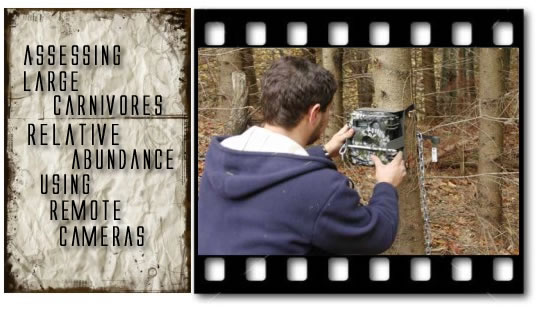|
| Assessing large carnivores relative abundance using remote cameras |

|
Automatic cameras utilisation allows in a first phase estimating the minimum number of individuals of large carnivores from the area of the Putna-Vrancea Natural Park. Subsequently, after the method calibration was realised a sampling protocol allowing the evaluation of large carnivores effectives (especially relative density).
In analyse are used 20 Talon-Extreme cameras, grouped two by two, having then 10 surveillance sites. The cameras are the type passive, triggering when in front of the sensor passes a body with a temperature higher than the surrounding environment. Cameras functions also in the night.
The study method used in the first phase is that of capture-recapture for closed populations. In the methods are critical the following affirmations: the population is closed and all individuals have the same chances of being captures. The closed type population is the one that during the study has a constant or almost constant number of individuals (without deaths, births, immigration, emigration). This condition can be satisfied only by a short duration of study (maximum 30-45 days per session) and by its development outside the birth period. The probability of all individuals having the same chances of being captured is achieved by placing cameras in sampling units with smaller surfaces than the minimum home-range, and by using specific calodorant vectors for attracting species. Cameras location is changed in sampling sessions, 3 times in the same grid, after which the sampling grid is changed.
Capturing site is monitorised once at 15 days, changing the card and batteries.
Sessions proved to be efficient for lynx and bear, but unsatisfying for wolf. Cameras are relative inefficient for wolf since they can’t be placed on their travelling routes, routes that are concurrent with forestry roads or large paths. Placing the cameras can’t be made on them since they can be stolen. For the wolf the most efficient method, which will be applied in the following sessions is that of sampling hair.
|
|






